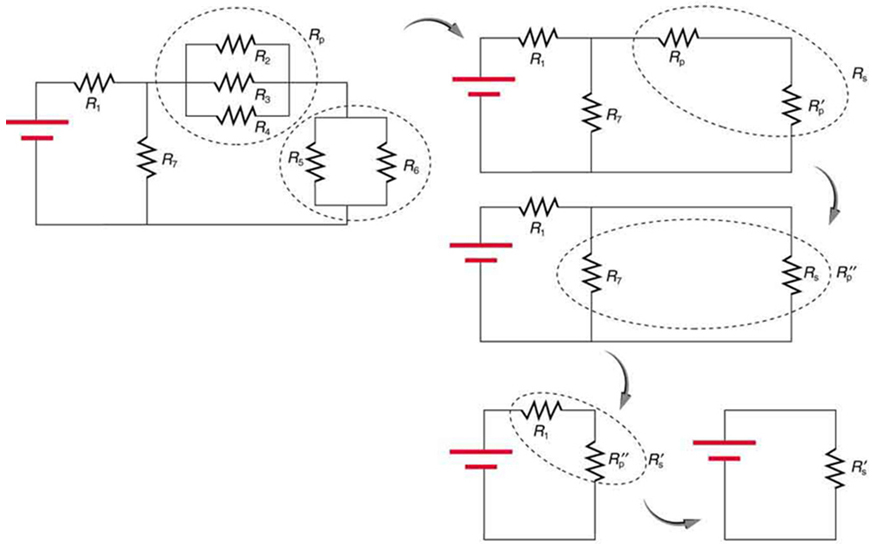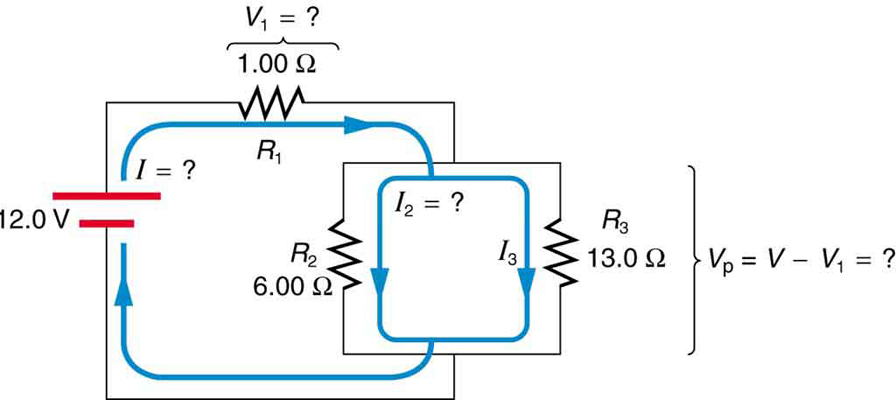| << Chapter < Page | Chapter >> Page > |
Discussion for (d)
The power dissipated by each resistor is considerably higher in parallel than when connected in series to the same voltage source.
Strategy and Solution for (e)
The total power can also be calculated in several ways. Choosing , and entering the total current, yields
Discussion for (e)
Total power dissipated by the resistors is also 179 W:
This is consistent with the law of conservation of energy.
Overall Discussion
Note that both the currents and powers in parallel connections are greater than for the same devices in series.
More complex connections of resistors are sometimes just combinations of series and parallel. These are commonly encountered, especially when wire resistance is considered. In that case, wire resistance is in series with other resistances that are in parallel.
Combinations of series and parallel can be reduced to a single equivalent resistance using the technique illustrated in [link] . Various parts are identified as either series or parallel, reduced to their equivalents, and further reduced until a single resistance is left. The process is more time consuming than difficult.

The simplest combination of series and parallel resistance, shown in [link] , is also the most instructive, since it is found in many applications. For example, could be the resistance of wires from a car battery to its electrical devices, which are in parallel. and could be the starter motor and a passenger compartment light. We have previously assumed that wire resistance is negligible, but, when it is not, it has important effects, as the next example indicates.
[link] shows the resistors from the previous two examples wired in a different way—a combination of series and parallel. We can consider to be the resistance of wires leading to and . (a) Find the total resistance. (b) What is the drop in ? (c) Find the current through . (d) What power is dissipated by ?

Strategy and Solution for (a)
To find the total resistance, we note that and are in parallel and their combination is in series with . Thus the total (equivalent) resistance of this combination is

Notification Switch
Would you like to follow the 'College physics for ap® courses' conversation and receive update notifications?